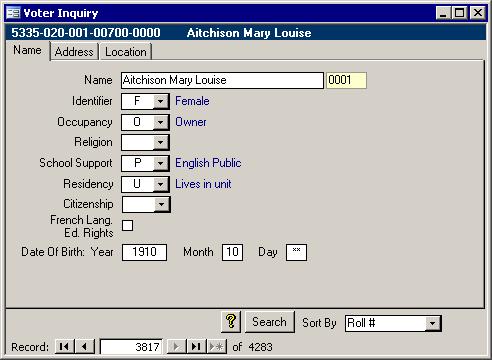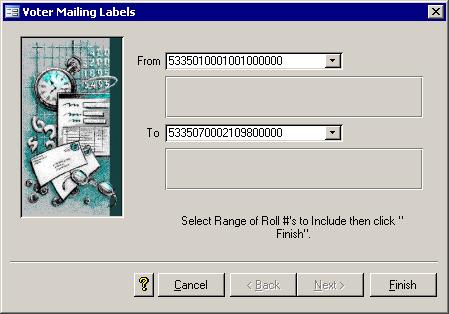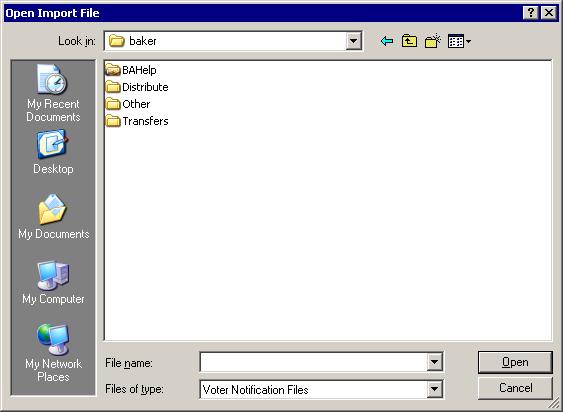Introduction There are a series of forms used for the list of voters. They are grouped
within three sections: Voter Inquiry, Voter Mailing Labels, and Voter Data Import. This help page will explain them all in turn. Voter Inquiry
The Voter Inquiry form shows you all the records in the voters list. If there are no records, you should perform the
import
first. This screen has been set up to look like the Baker and Associates' Tax Master in the Municipal Manager property tax software. 
You cannot change anything on this form because the voters list should remain in tact.
The default sort order is by roll number then by name sequence number. You can switch the sort order by using the pull down box in the lower right corner of the form. Your
sorting options are: Roll #, Name, and Location. This form defaults to roll number order because that is the default for how the
labels will print.
Name The Name tab, as shown in the picture above, contains personal data on each person.
Often the year, month and day of their birth date contains stars. This is normal; the assessment office often uses stars to denote missing data. Address

The Address tab contains the mailing address. There are up to three lines of the address plus the city, province, country, and postal code information. When put onto
the mailing labels, the second and third lines of the address are amalgamated into one line if they are not blank. As well, the postal code appears beside the city/province
according to the 'new' Canada Post standards. Location 
The Location tab has information needed to find the property. The description at the
bottom usually has an address, but may contain the legal description or general comments instead.
Mailing Labels
The first step in printing the labels is to select a range of roll numbers. Once the desired
range is selected, click the Finish button to preview the mailing labels on the screen.
Made to be stuck on voter notification cards, the mailing labels are designed to print on label sheets with twenty 4"x1" (Avery 5161) labels. Also included in the top right corner
are the ward and poll for that person's roll number. This makes it easier to match up the label with their correct card since there is not enough room to show the whole roll number. 
We followed Canada Post's outline for how to properly
put an address onto an envelope.
Note: This picture was borrowed from the Canada Post web site.
Importing Voter Data Once a year or just before an election, you should get an updated voters list from the Ontario Property Assessment Corporation (OPAC). Before importing data, it must first be
extracted from the OPAC's Voter Notification Tape/CD-ROM. Follow their instructions in their Readme.txt file and remember where you saved the file and what you called it. For
identification purposes in the future, it might be a good idea to save it with a file extension of VNF. Once you have the file saved, run the import data program from the
main menu of Baker and Associates' Voters List program.
When the Import Data form comes up, you can either type the full file name including the path, or you can find it by clicking the browse button. 
Once you enter the file name, click the Import button. The data will be imported into a
temporary table, checked then moved over to the Voters List table. Once the import is complete, you can print the new set of labels
. |